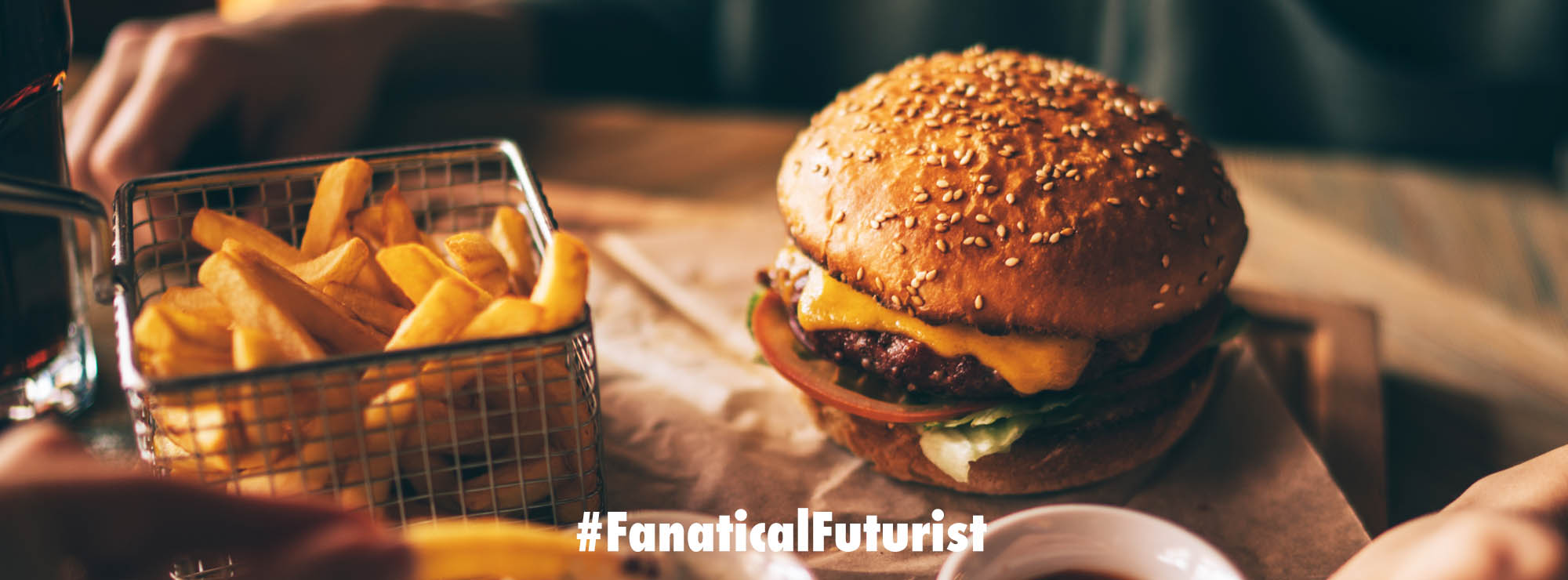
WHY THIS MATTERS IN BRIEF
If you don’t need animals to make meat you don’t need to feed them crops or water, deforest the Amazon, or figure out ways to eliminate their greenhouse gas emissions …
 Love the Exponential Future? Join our XPotential Community, subscribe to the podcast, future proof yourself with courses from XPotential University, read about exponential tech and trends, connect, watch a keynote, or browse my blog.
Love the Exponential Future? Join our XPotential Community, subscribe to the podcast, future proof yourself with courses from XPotential University, read about exponential tech and trends, connect, watch a keynote, or browse my blog.
Meat used to come from animals, but now it comes from just the cells of animals grown in bioreactors in labs – a new food production method called “Cultivated Meat.” And not only is this new method getting cheaper, but from Singapore to the US people can now buy, for example, chicken nuggets made in this way from restaurants and supermarkets.
In order to meet the growing demand for meat made in this way just under a year ago one of the biggest production facilities for cultured meat opened in Israel. Future Meat Technologies’ Rehovot plant produces 500 kilograms of lab grown meat per day – that’s equivalent to about 5,000 burger patties – and last week the company revealed plans for an even bigger facility, this one in the US. Its specific location has yet to be finalised, but the project will bring cultured meat production to an unprecedented scale.
The Future of Food, by keynote speaker Matthew Griffin
The bioreactors planned for the US facility will be over 40 feet tall and will hold 250,000 liters, that’s 66,043 gallons, of meat which could be used to create over 200,000 burger patties each day – a scale which significantly changes the economics of the industry and its future.
Needless to say this is a massive scale up from existing technology and the same manufacturer that’s making the US gear, ABEC, is also making a smaller 6,000 litre bioreactor for a facility in Singapore which when it becomes operational in 2023 will be the biggest of its kind installed to date until the US factory goes online.
Multiplying that by more than a factor of 40 then and making sure the quality of the final product is still the same will be no small feat.
The company behind the new mega project is California based Good Meat. Though the company has been selling its lab grown chicken in Singapore since 2020 it’s still awaiting FDA approval to sell its products in the US, but that’s not stopping it from going ahead with the ambitious plans for the new facility, though.
“The bioreactors will be far and away the largest, not only in the cultivated meat industry, but in the biopharma industry too,” said Josh Tetrick, CEO of Good Meat’s parent company, Eat Just. “So the design and engineering challenges are significant, the capital investments are significant, and the potential to take another step toward shifting society away from slaughtered meat is significant.”
Cultivated meat – not to be confused with plant based meat – is grown from animal cells and is biologically the same as meat that comes from an animal. The process starts with harvesting muscle cells from an animal, then feeding those cells a mixture of nutrients and naturally occurring growth factors or, as Good Meat’s process specifies, amino acids, fats, and vitamins, so that they multiply, differentiate, then grow to form muscle tissue in much the same way muscle grows inside animals’ bodies.
According to Good Meat’s website, they use cells from only “the best” chickens and cows, and carefully choose cells most likely to produce flavourful, sustainable meat. Besides being used as starters to grow edible meat in bioreactors, the cells are also “immortalised,” growing and dividing over and over; cells from one chicken could end up producing thousands of breasts.
“Cultivated meat matters because it will enable us to eat meat without all the harm, without bulldozing forests, without the need to slaughter an animal, without the need to use antibiotics, without accelerating zoonotic diseases,” Tetrick said.
Meat can be “harvested” just four to six weeks after initiating the growth process but it’s not a matter of plucking a ready-to-package breast from a vat and shipping it off to the grocery store. Besides going through safety and regulatory reviews, the harvested cells need to be turned into something resembling traditional meat. Good Meat says it uses 3D printing, extrusion cooking, and molding to refine the shape and texture of the product.
This all starts to sound a little Franken-meaty, but the company emphasizes that its products have nutritional profiles identical to those of conventionally raised meat. A few of the “final formats” the meat comes in include chicken nugget bites, sausages, shredded chicken, and chicken breasts.
It’s going to take a long time for factory farming to stop being a thing, but as cultivated meat continues to become more scalable, that day could be on the horizon. Tetrick thinks it’ll happen within his generation’s lifetime.
“I think our grandchildren are going to ask us about why we ate meat from slaughtered animals back in 2022,” he said.
Good Meat is expected to finalize the location of its US plant before summer’s end, and they’re aiming for domestic production to start by late 2024.